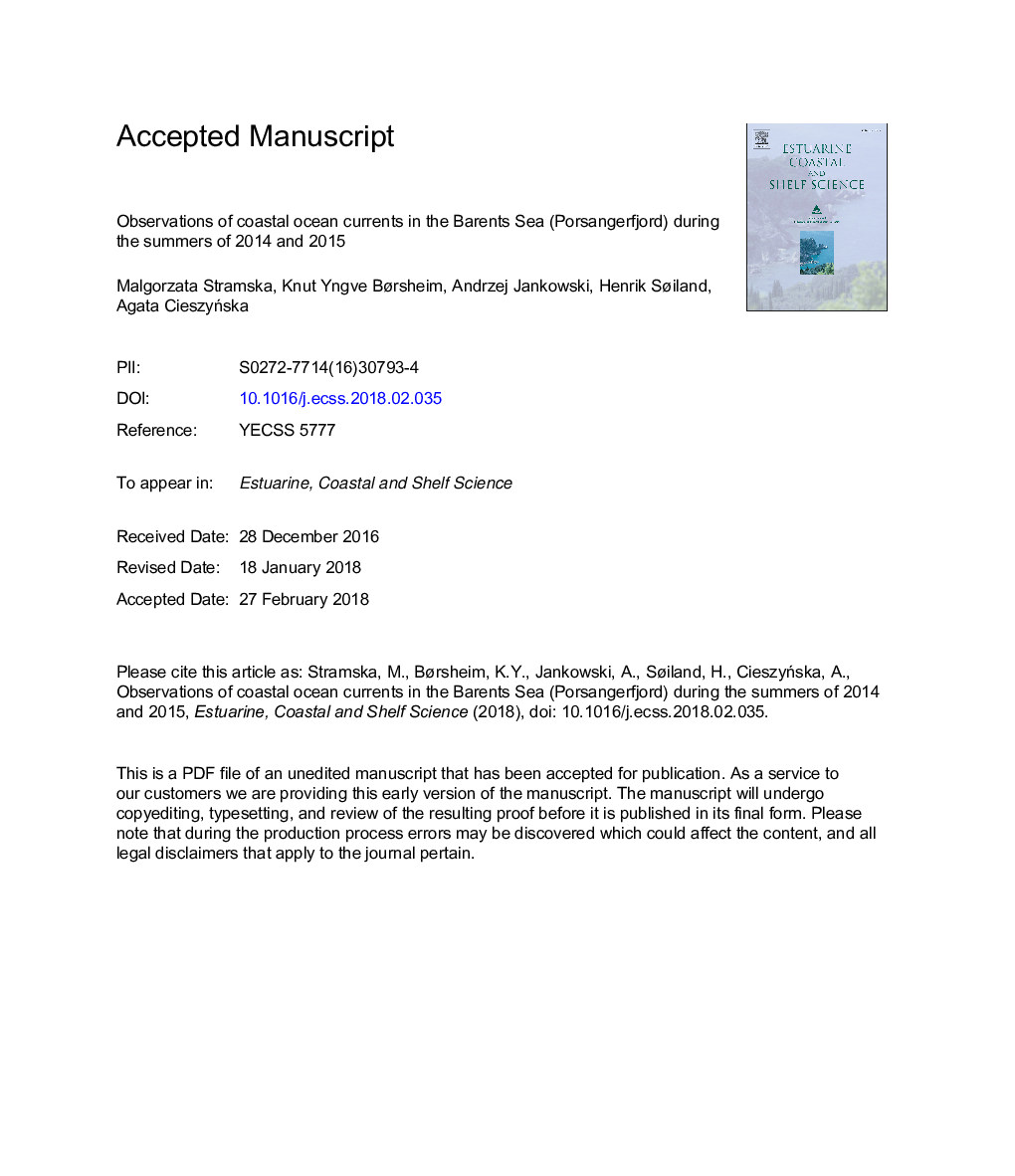| Article ID | Journal | Published Year | Pages | File Type |
|---|---|---|---|---|
| 10223830 | Estuarine, Coastal and Shelf Science | 2018 | 44 Pages |
Abstract
Surface current data collected with a high frequency radar system in the summers of 2014 and 2015 in the coastal waters of the Barents Sea (Porsangerfjord) have been analyzed. Application of a least-squares fit coupled with nodal modulation enabled separation of tidal and residual currents. The most important tidal component was M2 (semidiurnal lunar, period of 12.42â¯h) and the second largest one was S2 (principal solar semidiurnal, period of 12â¯h). Residual currents were significantly influenced by winds. The relationship between winds and currents is complicated, since wind speed, direction, and fetch are highly variable. The data reveal a significant contribution from inertial currents to residuals. Forcing of surface currents by winds resulted in more frequent measurements of stronger residual currents in situations when wind speeds were higher. Stronger winds and residual currents were most often associated with winds blowing from west to east. The most frequent residual direction was to the right by 10-30° in comparison to the wind azimuth. Freshwater runoff to the fjord influences the vertical distribution of water salinity. Due to runoff, surface water transport is on average directed out of the fjord, but its variability on synoptic time scales is governed by winds.
Related Topics
Physical Sciences and Engineering
Earth and Planetary Sciences
Geology
Authors
Malgorzata Stramska, Knut Yngve Børsheim, Andrzej Jankowski, Henrik Søiland, Agata CieszyÅska,
